Introduction
This paper studies the prominent art styles and artworks of the XIX and XX centuries, focusing on Post-Impressionism, Expressionism, Analytic Cubism, Dada, and Abstract Expressionism. Prominent French, German, and American artists and their unique approaches to these styles are discussed considering the cultural and historical context. The purpose of the essay is to show the distinctive features of each style, their differences, and similarities.
Henri de Toulouse-Lautrec, At the Moulin Rouge (1892-1895)
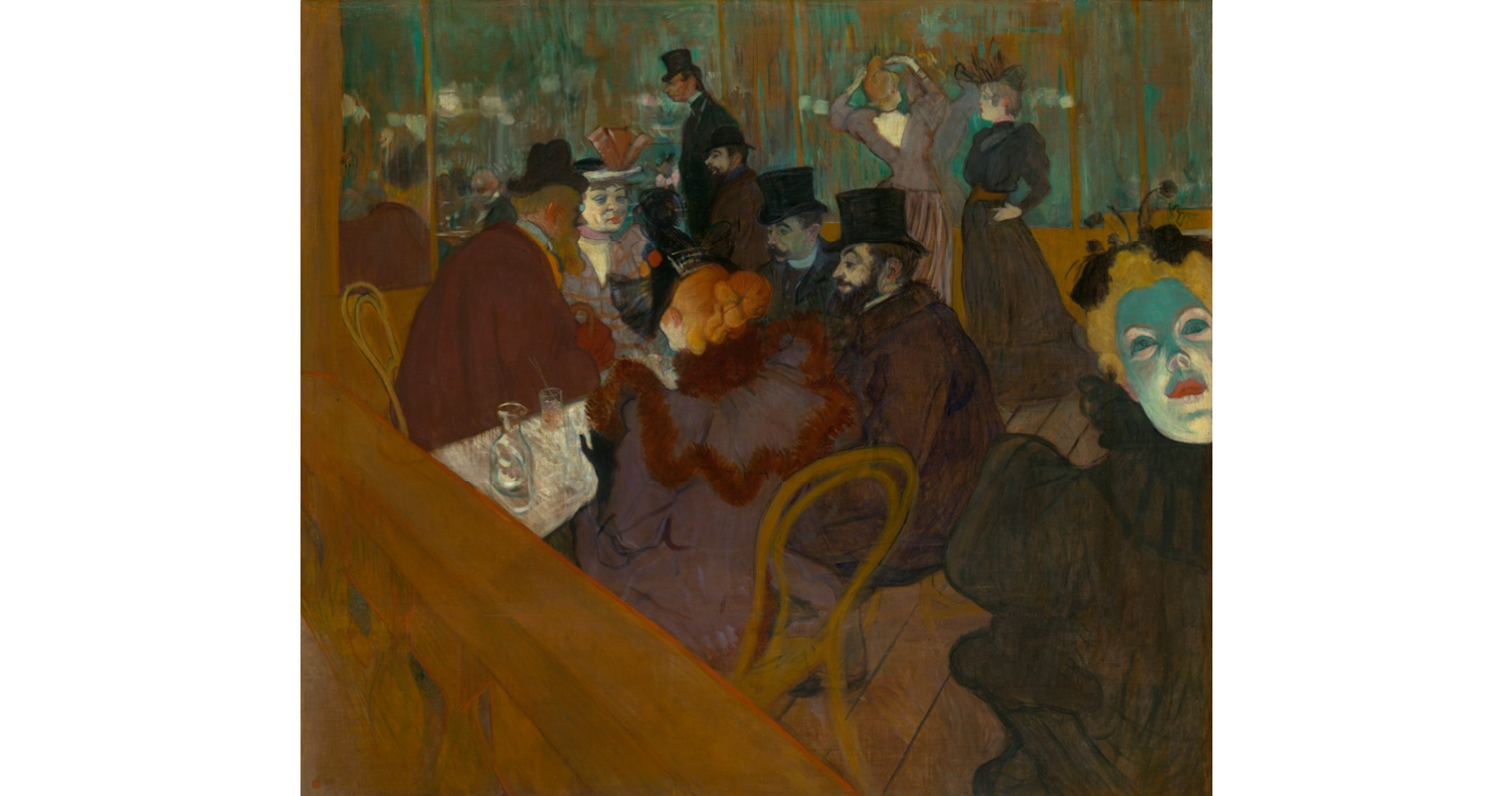
Henri de Toulouse-Lautrec avidly captured the spectacle and spirit of La Belle Epoch in his 1892-1895 oil on canvas post-impressionism piece At the Moulin Rouge. The viewer observes the scene through the hazy eyes of the club’s visitor, with slightly unnatural colors and distorted perspective representative of the visitor’s not-so-sober state. The distorted expression of the woman’s harshly lit and acid-green face in the foreground is characteristic of post-impressionism. The work, depicting the legendary club’s regulars, including Henri and his cousin, is the most famous depiction of the Moulin Rouge nightclub, the whole Parisian life after dark.
Franz Marc, Fate of the Animals (1913)
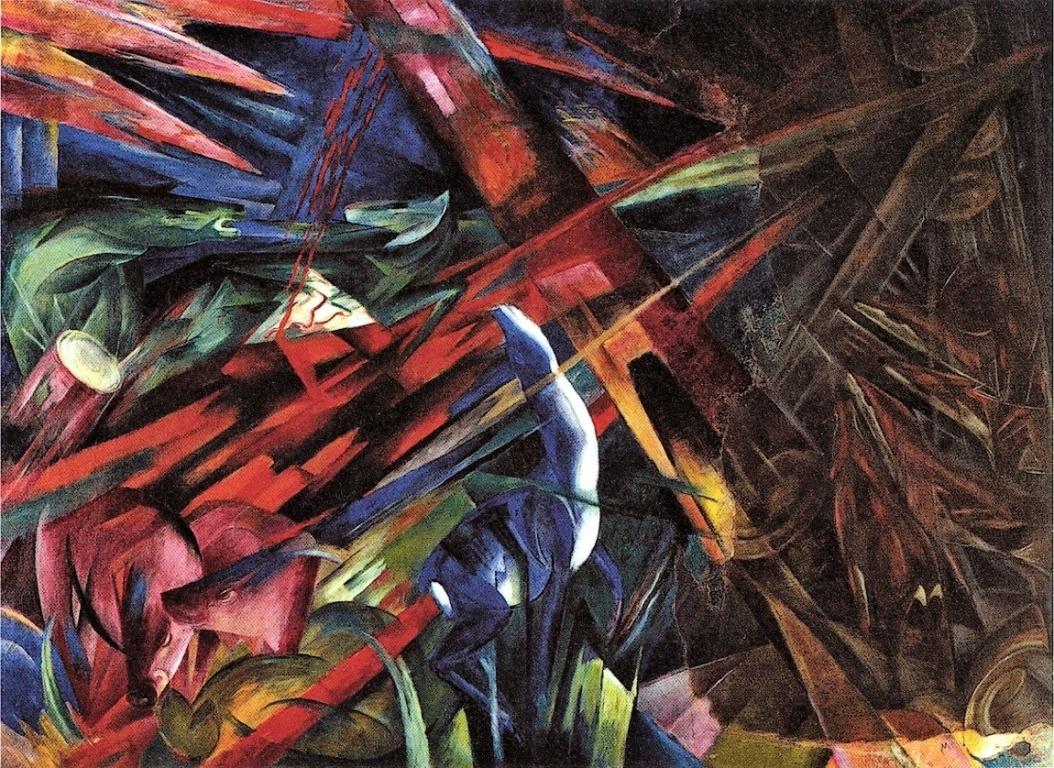
Fate of the Animals painted in 1913 by Franz Marc in oil on canvas, is a definitive piece of German Expressionism. The lack of horizontal and vertical lines, combined with the deep colors and distorted forms, is aimed at comunicating tension of the pre-war anxiety saturating 1913 Europe (Kleiner 2021). The diagonals represent blood splashes and bullet traces, the animals in the painting are ready to accept the impending doom of the falling tree. The work depicts Marc’s premonition of the upcoming World War I and the horrors it would bring.
Georges Braque, The Portuguese (1911)
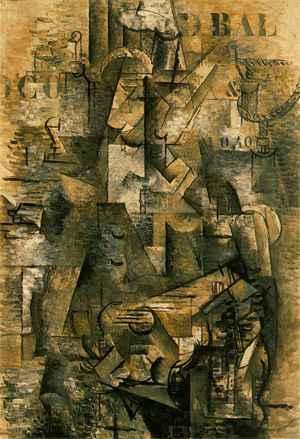
The Portuguese by George Braque, painted in 1911 using oil on canvas is a primary example of early Analytic Cubism. By breaking the guitar player into small pieces, the artist transforms an object of reality into an object of vision. The Cubist strategy of abstractly showing different sides of an object simultaneously is prominent in this artwork. The use of subdued hues is characteristic of Cubist art, represented here by utilizing only brown and yellow tones (Kleiner, 2021). Disrupting expectations of reality in Cubist art is the reaction to a sudden departure from the conventional view of the world in light of new scientific discoveries of the time.
Kurt Schwitters, Merzz. 19 (1920)
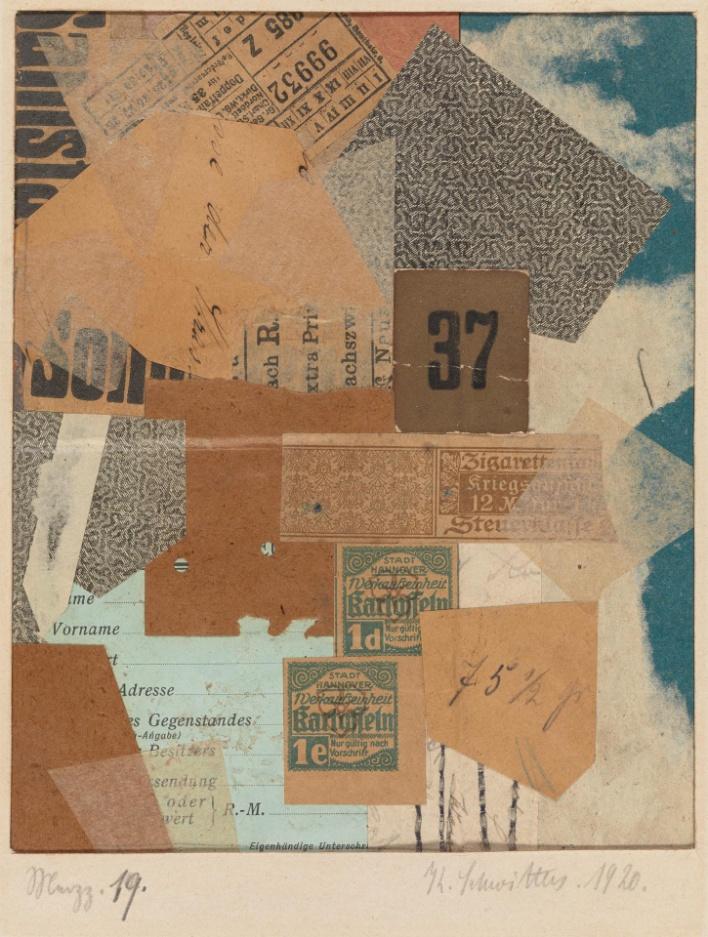
Kurt Schwitters’ 1920 collage Merzz. 19 is a typical representative of the Dada movement, including the elements of trash, mostly paper and cardboard. The fragmented, disconnected, and unattractive nature of Schwitters’s works symbolizes the global disillusion with the previously accepted norms. Granting objects that are essentially trash the status of high art is a typical Dada approach, consistent with the public request for new meanings in all spheres of life.
Jackson Pollock, Number 1, 1950 (Lavender Mist) (1950)
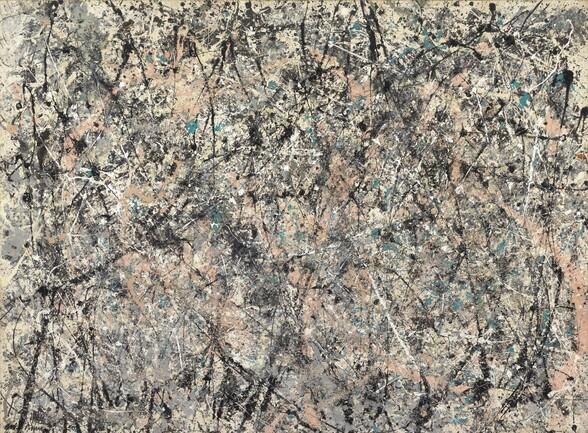
Jackson Pollock’s Number 1, utilizing oil, enamel, and aluminum paint on canvas, is typical of his unique Abstract Expressionist style. Pollock believed that revolutionary art required new materials and techniques that are most evident in Number 1. The composition betrays a keen awareness of the edges and the forms despite their perceived chaotic nature. Clement Greenberg described Pollock’s art as “the dissolution of the pictorial into sheer texture, into apparently sheer sensation, into an accumulation of repetitions” (Greenberg, 1948). The work represents the avant-garde experiments of the time and the new trends in psychology, such as Jungian analysis.
Conclusion
The evolution of art is particularly evident in how Jackson Pollock’s early works borrowed a lot from Navajo pictorial art or how Dada was influenced by Cubists. The artists mentioned above share the same idea of embracing art not just as a tool of representing reality, but as a way of expressing artist’s perception of it. The difference is in the themes and ideas that the artists convey: from lavish and relaxed Parisian night life by Toulouse-Lautrec to deeply existential and dreadful works of Franz Marc and seemingly devoid of any sense pieces by Pollock and Schwitters. German Expressionism of the early XX century is fascinating in how vividly and emotionally those artists represented reality. Their works brightly reflect the profoundly personal perception of the era and the environment those artists lived in. This style is particularly representative of the XX century art major theme: the influence of war on human.
References
Braque, G. (1911). The Portuguese [painting]. Kunstmuseum Basel, Basel, Switzerland. Web.
Schwitters, K. (1920). Merzz. 19 [collage]. Yale University Art Gallery New-Haven, CN, United States. Web.
Toulouse-Lautrec, H. D. (1892-1895). At the Moulin Rouge [painting]. The Art Institute of Chicago, Chicago, IL, United States. Web.
Marc, F (1913). Fate of the Animals [painting]. Kunstmuseum Basel, Basel, Switzerland. Web.
Clement Greenberg (1948). The Crisis of the Easel Picture. Web.
Pollock, J. (1950). Number 1, 1950 (Lavender Mist) [painting]. National Gallery of Art, DC, United States. Web.
Kleiner, F. P. (2021). Gardner’s art through the ages: The western perspective, volume II (16th ed.). Cengage, South University Online Library
Kleiner, F. P. (2019). Gardner’s art through the ages: A global history (16th ed.). Cengage, South University Online Library